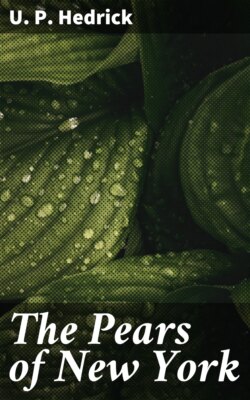Читать книгу The Pears of New York - U. P. Hedrick - Страница 17
На сайте Литреса книга снята с продажи.
ОглавлениеWoody plants, trees or shrubs, with smooth or scaly bark. Leaves simple, or sometimes lobed, alternate, usually serrate, deciduous, with deciduous stipules which are free from the petiole. Flowers perfect, regular, borne in compound terminal cymes; torus urn-shaped, adnate to the ovary and inclosing it with thick, succulent flesh at maturity; calyx-lobes 5, acuminate and reflexed, persistent in some and deciduous in other species; petals 5, white, pink or red, inserted on the thickened border of the disk; stamens 15 to 20, in three rows; styles 2 to 5, free or united below; carpels 2 to 5, inferior, crowned by the styles, usually 2-seeded. Fruit an ovoid or pyriform pome; seeds two in each cell, brown or brownish, lustrous, mucilaginous on the outer surface.
The genus comprises fifty to sixty species in the north temperate zone of the three continents. The largest number is found in south-central and eastern Asia. In North America, Pyrus is represented by five species, while eight or nine species inhabit Europe. In several of the species there are many natural varieties. The two sections of Pyrus, given the rank of genera by some authors, are distinguished as follows:
1. Apples (Malus). Flowers pink, rose-color, red or sometimes white, borne in fascicles or subumbellate clusters on short spurs or lateral branchlets; ovary 3- to 5-celled; styles more or less united at the base. Fruit more or less globular with a distinct depression at both ends, the flesh without grit cells, rounded at the base. The species in this section number 30 to 40, of which not more than a half dozen are domesticated.
2. Pears (Pyrus). Flowers white, few, borne in corymbs on short spurs or lateral branchlets; ovary 5-celled; styles usually free. Fruit usually pyriform, sometimes subglobose, usually conical at the base, the flesh usually bearing grit cells when ripened on the tree. The species number 15 to 20 of which but two are truly domesticated, but several others give promise of value for stocks and possibly for their fruits.
